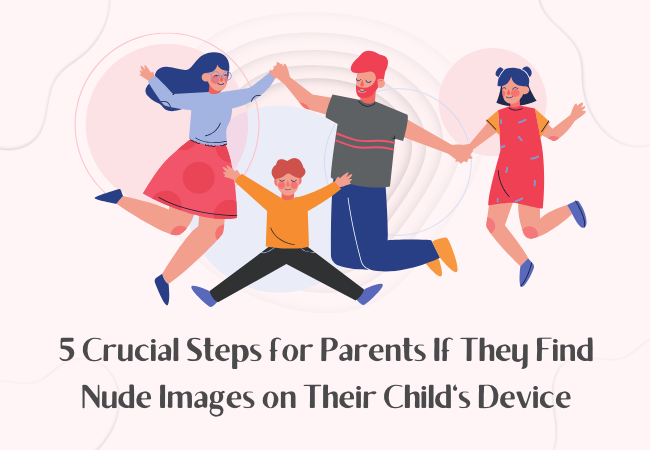5 Crucial Steps for Parents If They Find Nude Images on Their Child’s Device
Discover the 5 essential actions parents should take if they find nude images on their child’s device. Learn how to handle the situation with care, protect your child, and seek appropriate help.
Discovering nude images on your child’s device can be a shocking and distressing experience for any parent. In today’s digital age, this scenario is unfortunately becoming more common. It’s crucial to approach this situation with care, understanding, and a clear plan of action. This guide outlines five essential steps to help you navigate this challenging situation, protect your child, and address the issue effectively.

Step 1: Stay Calm and Don’t React Impulsively
The first and most crucial step is to remain calm. Your initial reaction may be one of shock, anger, or panic, but it’s essential to compose yourself before taking any action.
Why this is important:
- Your child needs your support, not judgment
- A calm approach will help you think clearly and act rationally
- Reacting emotionally might cause your child to shut down or become defensive
What to do:
- Take deep breaths
- If possible, step away for a few moments to collect your thoughts
- Remind yourself that your primary goal is to protect and support your child
Step 2: Have an Open, Non-Judgmental Conversation
Once you’ve calmed down, it’s time to talk to your child. This conversation is crucial and should be handled with care and empathy.
How to approach the conversation:
- Choose a private, comfortable setting
- Start with open-ended questions like, “Can we talk about what I found on your device?”
- Listen more than you speak
- Avoid accusatory language or shame
Key points to cover:
- Express your concern for their safety and well-being
- Ask if they’re being pressured or blackmailed
- Discuss the potential consequences of sharing nude images
- Reassure them that you’re there to help, not punish
Step 3: Assess the Situation and Gather Information
Before taking any further action, it’s important to understand the full context of the situation.
What to find out:
- Are the images of your child or someone else?
- How were the images obtained or shared?
- Is there any indication of coercion or abuse?
- Are there any adults involved?
Why this matters:
- The appropriate next steps depend on the specific circumstances
- This information will be crucial if you need to involve authorities
Step 4: Take Necessary Protective Actions
Based on what you’ve learned, take steps to protect your child and others involved.
Possible actions:
- If the images are of your child:
- Do not copy, send, or share the images
- Consider reporting to the platform where they were shared
- Discuss with your child about deleting the images
- If the images are of another minor:
- Do not view or keep the images, as this could be illegal
- Consider informing the other child’s parents if appropriate
- In all cases:
- Consider temporarily limiting your child’s device access
- Review and strengthen parental controls and privacy settings
Step 5: Seek Professional Help and Support
Dealing with this situation can be overwhelming. Don’t hesitate to seek professional help.
Who to contact:
- School counselor or therapist
- Child psychologist specializing in digital issues
- Local law enforcement if there’s suspicion of exploitation or abuse
- Organizations like the National Center for Missing and Exploited Children for guidance
Benefits of professional help:
- Provides expert guidance on handling the situation
- Offers support for both you and your child
- Can help address underlying issues or trauma
Conclusion
Discovering nude images on your child’s device is a serious matter that requires a thoughtful, measured response. By following these five steps – staying calm, having an open conversation, assessing the situation, taking protective actions, and seeking professional help – you can navigate this challenging situation effectively.
Remember, your primary goal is to protect and support your child. This situation, while difficult, can be an opportunity to strengthen your relationship with your child and teach important lessons about digital safety and personal boundaries.
Stay vigilant, keep communication lines open, and continue to educate yourself and your child about online safety. With the right approach, you can turn this challenging experience into a valuable learning opportunity for the whole family.
For more resources on digital safety and parenting in the digital age, visit:
- Common Sense Media: Online Safety
- National Center for Missing and Exploited Children
- Internet Safety 101
Remember, you’re not alone in facing these challenges. Don’t hesitate to reach out for support and guidance as you navigate this situation.
For more information and guide, visit usaparentingtips.com






